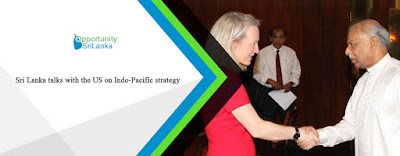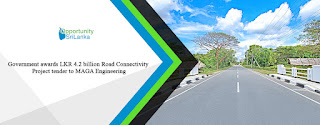Cabinet of
Ministers accepted the Roads and Highways Minister Johnston Fernando's plan to
build an alternate road system of 100,000 km in length to provide easy access
for highways and expressways. Roads that have not repaired for nearly ten years
will choose after taking into account the road value and the number of families
using the way.
Sri Lanka has an
approximately 120,000-kilometer road network sufficient to meet 90% of
transportation demand. The Road Development Authority (RDA) is responsible for
the maintenance and development of national roads of the A and B classes and
4,480 bridges over the total length of highways. The regional councils were
responsible for about another 15,000 kilometres of C and D-class highways.
Local governments and other government and private institutions maintain and
develop the balance.
The newly
elected government aims to upgrade 100,000 KM alternative road system to facilitate
a higher level of access to main roads and expressways, while all internal and
rural access roads will be improved to facilitate access to the alternative
road system.
The island-wide
network of roads amounting to 120,000 KM, which includes all rural roads, has
neither been developed nor maintained. Therefore, the entire road network that
has fallen into a state of disrepair and neglect will be resurfaced and modernised
to conform to international standards.
They will
modernise the Ceylon Transport Board (CTB) and make it a world-class transport
service on par with any other developed country. The bus stands, which located
on prime land, will be developed alongside servicing and maintenance depots of
such bus routes and networks for commercial purposes of generating revenue to
the CTB.
They also intend
to re-fleet the current bus stock and introduce environmentally friendly buses
(electric and hybrid buses) to ply within the city limits of the New Colombo.
This ‘Green Transport’ concept will adopt across all public and private
transport providers.
OSL Take: The
100,000km road upgrading tender proposed by the Ministry of Road & Highways
is indicative of the continuous growth of Sri Lanka’s economy. It is also
indicative of the growing business potential in the country.
Sri Lanka’s
geographical positioning in the Indian Ocean, the ease of doing business
environment in the country, and the many trade agreements, as well as trade
concessions enjoyed by the state, have made Sri Lanka the ideal business destination
in the South Asian region. Therefore foreign businesses/investors could
confidently explore business/investment opportunities in Sri Lanka.
OSL, as the pro-active FDI generator to the
island, now calls upon Chinese investors to partner with OSL to bid for Road
network-related Projects open for investment through the PPP model. Have a free
consultation with the biz-friendly OSL Team today to learn more about the scope
available and the way to move forward.



















